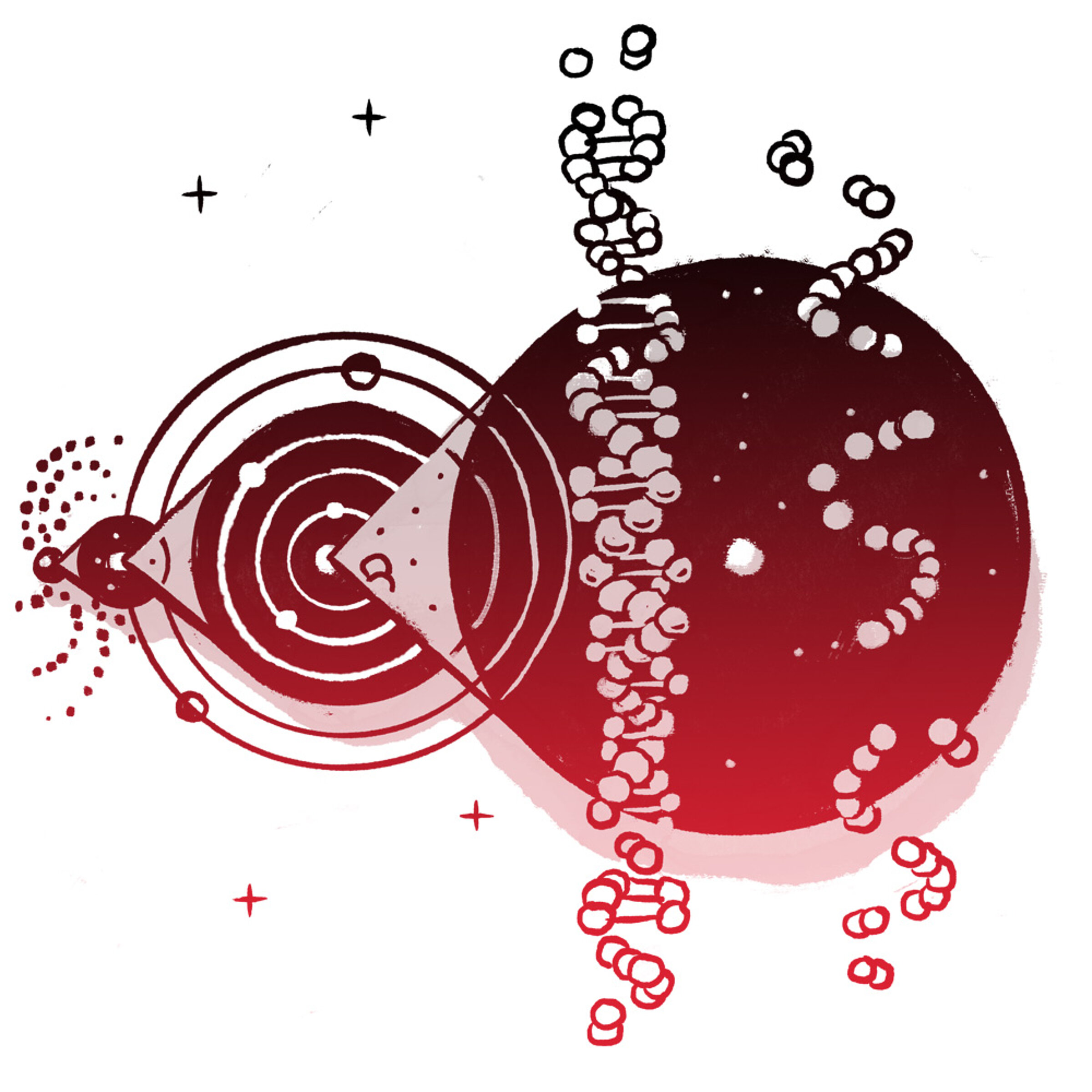Looking at atoms is like trying to observe planetary motion. If you consider each single object in the universe, it is overwhelming; there are just too many things moving. More than 400 years ago, Johannes Kepler observed the position of the planets and discovered that there is a general rule governing their movement. Gravity. The motions of the planets are not random, they follow very specific orbits.
We are trying to do the same with atoms in a protein by finding simple, physics-based models that can explain the complex dynamics of proteins in relation to their function. Just like objects in the universe, there are thousands and thousands of atoms in proteins, and we cannot follow each one of them with the naked eye. Instead, we are looking for the underlying principles that organize them. Artificial intelligence helps us to identify them.
Collective behavior really fascinates me and not just in macromolecules. When I go diving, I love to watch schools of fish that move together through the water. We apply statistical mechanics to study such phenomena. Statistical mechanics as a branch of physics helps us to extract simple rules from many components. A classic example is a volume with gas: you do not need to follow the trajectory of each single atom in the gas to understand that there is pressure, entropy, and energy.
Physics can help to explain biology. Biology is sometimes very qualitative: If you open a biology book, you will find a lot of descriptions. Physics can make it more quantitative. You delve another layer deeper. For instance, Alzheimer's disease is due to the misfolding of proteins and aggregations. If we are able to design models that can predict the folding and misfolding of proteins, we can try to intervene and develop drugs using computers. The quantitative understanding of biological function at the molecular level is still in its relative infancy. But hopefully this will change in the near future.
In a collaboration with experimentalists at Freie Universität Berlin, I am focusing on neurotransmitters that move between nerve cells at the synapses. Numerous proteins regulate - just like an army of little workers - how the neurotransmitters are absorbed by the cell membrane. We are trying to understand the interplay of these proteins, which happens with a lot of stochasticity, by using statistical mechanics and developing models that we test experimentally. We are starting with one essential protein. Once we understand this molecule, we can look at how it interacts with other molecules to facilitate neurotransmission - and how this process fails in neurodegenerative diseases.
If we can predict the function and malfunction of proteins, offers a great deal of promise for the design of therapeutic interventions. But this is still a long way off. To make progress, I am focusing on the general rules behind the apparent complexity. Because this is just what physics does - discover simplicity in complexity.


